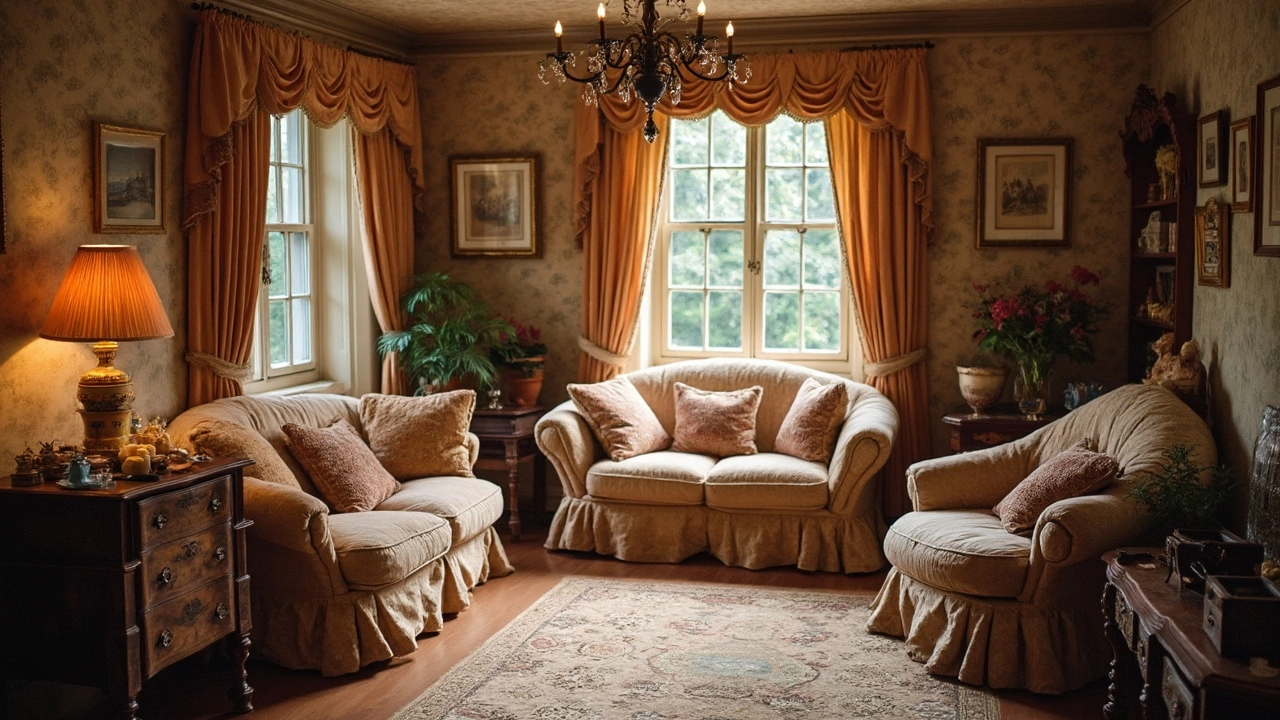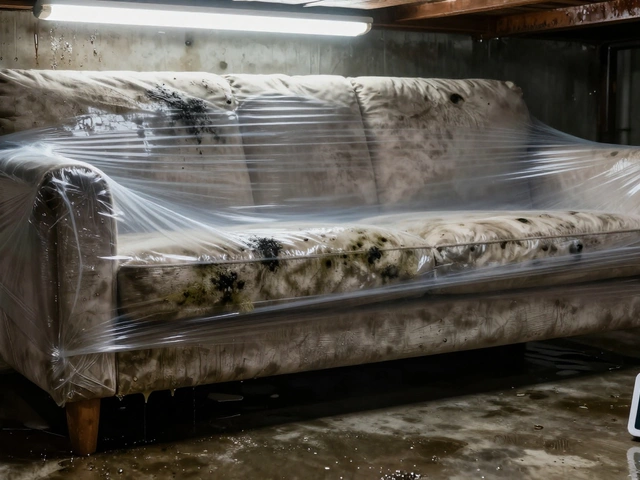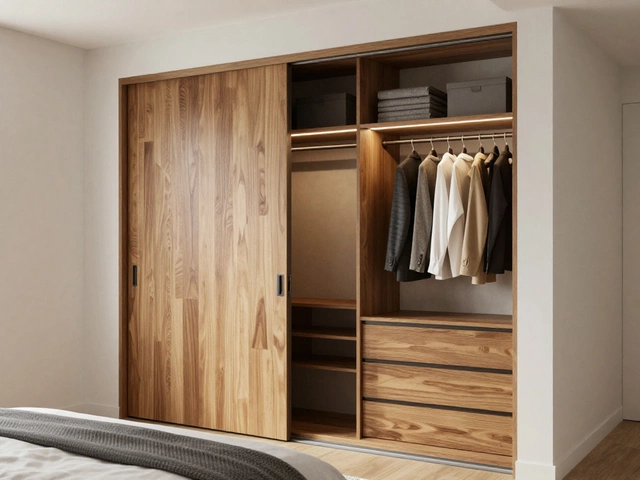Planning to store your furniture? It's a bit like packing up your life, isn't it? There's more to it than just stacking pieces in a room or a storage facility. The goal is to protect your furniture from dust, scratches, and who knows what else could find its way in there. Honestly, the right cover can make all the difference.
First up, let's talk storage challenges. Dust bunnies seem to multiply faster than actual rabbits. So, before you even think about covers, dust all your furniture thoroughly. If your storage location is a bit on the humid side, you're not just battling dust. Mold and mildew can be silent destroyers of your prized pieces.
Now, what's the best cover? You might think, 'hey, I have an old tarp lying around,' but hold your horses. Plastic might sound like a good idea, but it can trap moisture, turning into a damp sheet of regret over time. Instead, cotton or breathable fabric is a smarter pick, allowing air circulation and keeping your furniture fresh.
- Understanding Storage Challenges
- Choosing the Right Covers
- DIY Covers and Solutions
- Materials to Avoid
- Maintaining Furniture During Storage
Understanding Storage Challenges
Storing furniture might seem as simple as just moving pieces into a space, but it's more complex than that. You've got to tackle furniture storage head-on, considering various factors that could wreak havoc on your beloved pieces.
First off, let's talk dust. It's like that uninvited guest that never leaves. In a storage setting, dust is relentless. Over time, it can make furniture look tired and grimy. Regular cleaning before storage is non-negotiable. It effectively prepares each piece, so they stay fresh even after hibernating in storage.
Next up is humidity. Moisture is the true arch-nemesis. It can lead to warping wooden furniture and wreak havoc on fabrics and leather. If you're storing in an area with high humidity, a climate-controlled storage unit should be on your radar to help maintain consistent conditions.
Other Challenges
It’s not just dust and humidity you've got to worry about; pests can be a real headache. Bugs and rodents might decide your stored items make a great new home. Imagine opening your storage unit only to find gnaw marks and droppings. Prevent this nightmare with pest control measures, like using pest deterrent sprays or traps.
Why not avoid common storage missteps altogether? Overloading a storage unit might seem efficient, but it can cause dents, scratches, and worse. Storing heavy items on top of lighter ones is a no-go. Arrange your items thoughtfully, ensuring everything has room to breathe, so nothing ends up damaged.
The proper know-how and a little effort can keep your furniture in pristine condition. These challenges are manageable with the right precautions, and by the end of the day, you’ll be glad you took the time to protect your investments.
Choosing the Right Covers
When it comes to protecting your precious furniture pieces, picking the right covering isn't just a one-size-fits-all situation. Seriously, there's a bit of strategy involved if you want to keep everything shipshape while in storage.
Cotton and Breathable Fabrics
For starters, let's talk fabric. Using breathable fabrics, like cotton, is a major win. These allow air flow, helping to prevent moisture build-up. Remember, moisture is like kryptonite to wood and upholstery. So, let it breathe!
Old Sheets and Blankets
You don't always need to buy special covers; sometimes, an old bed sheet or blanket can do the trick. They create a barrier against dust while allowing air to circulate. Just ensure they're clean before use, because the last thing you want is lingering smells or dirt.
Specialty Covers
If you've got a bit of budget and want to take it up a notch, consider investing in specialty furniture covers. These are designed specifically for storage, often with padded interiors that offer extra protection against knocks and scratches.
What to Avoid
One big no-no is plastic covers. While they seem like a sturdy option, plastic traps moisture which can lead to mold and mildew. If you're really worried about water damage, you might use plastic, but don't enclose the entire piece. Leave some openings for air.
Extra Tips
- Wrap delicate items, like mirrors or glass surfaces, in bubble wrap before covering.
- Don't forget to lift furniture off the floor where possible, as this helps prevent potential water damage.
- Label your covered furniture. It's a small step that helps big time when you're trying to find stuff later.
Choosing the right cover for your furniture storage needs some thought. But with the right materials and a few smart decisions, your furniture will thank you for the care you took once it's out of storage.
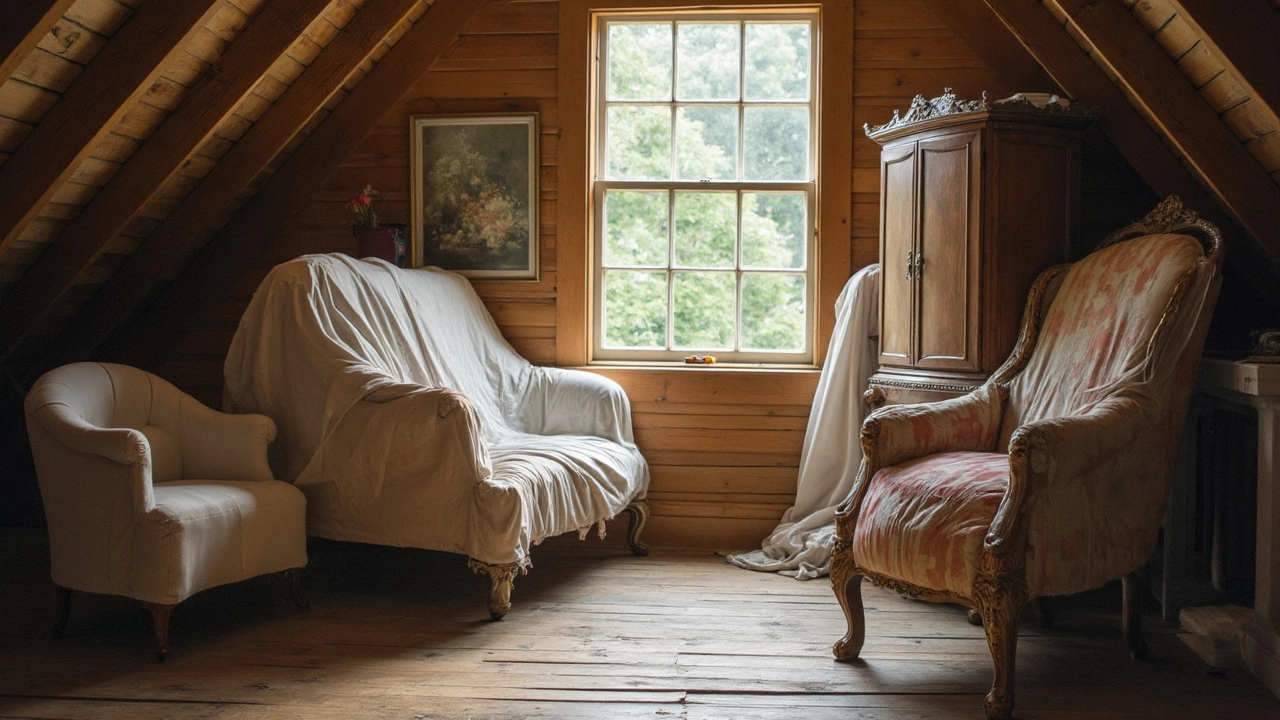
DIY Covers and Solutions
Alright, for those of us on a budget or feeling a bit crafty, making your own furniture covers can be a fun and practical solution. It's not just about saving a buck; it's about customizing protection specifically for your needs.
Repurposing Old Sheets and Blankets
Got some old sheets or blankets lying around? These can become budget-friendly furniture covers. Cotton sheets are especially great because they're breathable. Wrap them snuggly around your furniture, securing with some clothespins or bungee cords for extra hold. Simple, right?
Sewing Custom Covers
If you’ve got some sewing skills, consider making fitted covers. Head over to a fabric store, or maybe rummage through your closet for unused fabric. Measure your furniture pieces and cut the fabric accordingly. For a secure fit, add some elastics or Velcro straps—it’s DIY at its finest.
Using Drop Cloths
Drop cloths aren’t just for painting. They’re heavy-duty and can serve as a great protective cover. Get them from any hardware store. They're cheap and tough, ideal for covering bulkier items.
An Ingenious Hack
Trying to cover furniture legs? Use socks! Slip these over the feet of chairs and tables for protection against scratches. It might sound quirky, but hey, it works!
And there you have it—practical DIY storage solutions that won’t break the bank. Plus, who doesn’t love a bit of upholstery creativity?
Materials to Avoid
When it comes to storing furniture, picking the wrong material to cover your stuff can lead to headaches you didn’t sign up for. Let's save you some trouble by pointing out what not to use.
Plastic Wrap
First off, ditch the plastic. Sure, it seems like a simple fix—cheap and easy to find. But here’s the deal: plastic traps moisture. Imagine your beloved couch sitting under a plastic sheet in a humid storage unit. It becomes a sauna for mold and mildew, and you’ll regret it when you unwrap a smelly, damp disaster.
Non-Breathable Covers
Another boo-boo is any non-breathable cover. This includes those old non-woven covers you have in your garage. They might shield the surface, but they don't let air pass through, which means they’ll trap even the tiniest bit of moisture. Less air circulation means a breeding ground for mold, and you don’t want that.
Newspaper or Printed Paper
Using newspaper for wrapping sounds like an old-school trick, but here’s the thing: the ink can transfer to your furniture. Plus, any moisture can turn those papers into a messy heap. Old textiles dyed with unstable colors can do the same. They may not seem like a big deal initially, but they can leave permanent imprints on light-colored furniture.
Heavy or Thick Blankets
Thick blankets may protect against scratches, but they can be too heavy for certain types of furniture. For delicate items like fine wood or antiques, the pressure from a heavy blanket might leave indentations or lead to structural weaknesses over time.
Instead of these mishaps, aim for high-quality, heavy-duty cotton covers or moving blankets that are both breathable and protective. You’ll have peace of mind knowing your furniture is safe without any unintended consequences.
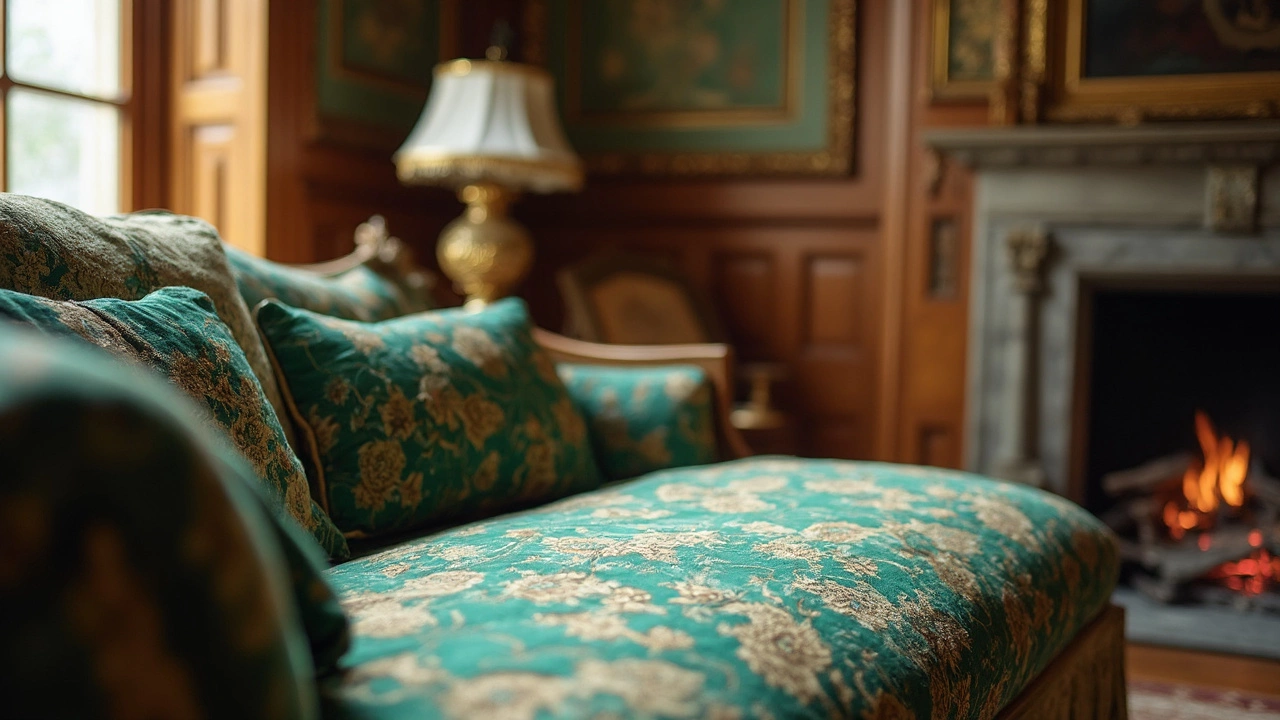
Maintaining Furniture During Storage
So, you've got your furniture all packed up in that storage unit, but the job's not finished yet. Just like anything else, stored furniture needs a bit of TLC now and then to make sure it stays in tip-top shape. You wouldn't want those beloved chairs turning into homes for dust mites, right?
Regular Checkups
Schedule regular visits to your storage space. It might feel like an extra chore, but peeking in every few weeks can save you from future headaches. Check for signs of moisture or pests. Trust me, spotting a small issue early can stop it from becoming a big problem.
Climate Control Is Your Friend
If your storage gives you the option, spring for climate control. Temperature and humidity fluctuations can do a number on wood and leather. Furniture appreciates stability just like people do.
"Stored properly, furniture can maintain its value and usability for years," says Jane Collins, a seasoned furniture conservator.
Reorganize Occasionally
Yeah, moving stuff around isn't the most exciting thing, but it helps. If something's pressing against another piece for long periods, it might leave a mark or dent. Shuffle things around to keep everything looking fresh.
Use of Protective Covers
Make sure those furniture covers are still doing their job. A quick glance can tell you if they've slipped or need replacement. The goal is to keep the nasty elements at bay, not just cover your pieces for the sake of it.
Keeping the Space Clean
Extras in the storage area can be pests, dust, or even moisture. A quick sweep or vacuum can work wonders. It might sound too simple, but a clean space goes a long way in preventing issues.
Want the hard facts? Let's wrap up with some valuable stats:
| Furniture Type | Recommended Humidity Level |
|---|---|
| Wood | 40-60% |
| Leather | 45-55% |
These are the sweet spots where your furniture will thrive best. Keeping tabs on these details helps you stop looking back with regret.

